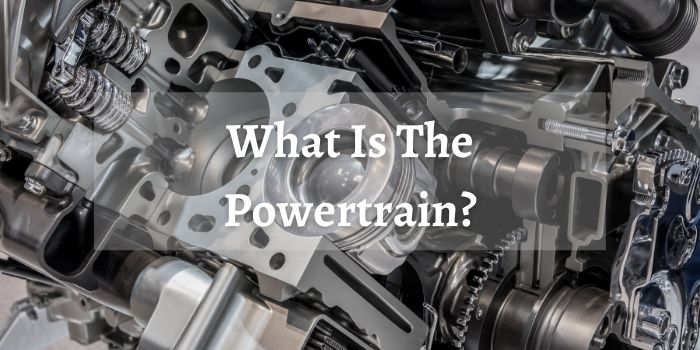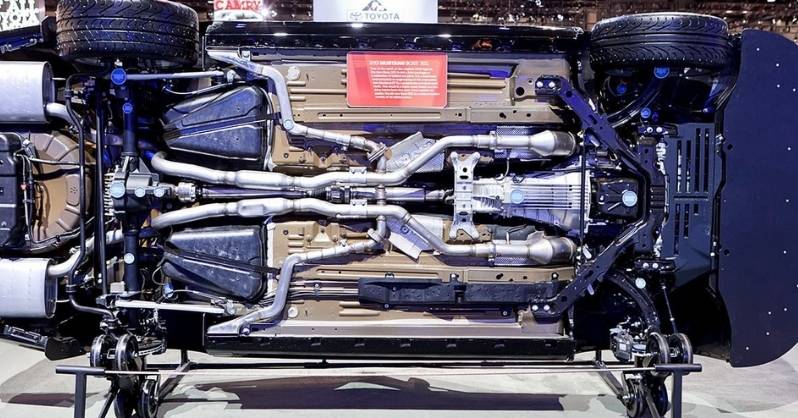Do you know what the powertrain is? Most people don’t. However, It’s an important part of your car, and it’s worth knowing more about.
So, what is the powertrain?
The powertrain is the systems in your car that produce power. This includes the engine, transmission, driveshaft, differential, and axle. Each of these components work together to create the driving experience you enjoy every day. Knowing how they all work will help you maintain your vehicle and troubleshoot any issues that may come up
Now, today, we’re going to talk about the powertrain and what makes it work. Read on to know more about it.
What Is The Powertrain

Powertrain is the component of a vehicle that produces and transfers power from the engine to the wheels. It consists of the engine, transmission, driveshaft, differential, and axle assemblies. The powertrain is essential for making a vehicle move and must be able to withstand high levels of stress during operation. If there’s any issue with the powertrain, you’ll experience bad pcm symptoms.
Components of Powertrain
Below, we’ll discuss the components of powertrain in detail
Engine
An engine is a mechanical device that converts heat energy into rotational motion. The engine’s pistons move up and down to create a rotating motion that drives the car forwards.
In a powertrain, the engine works with the transmission to propel the vehicle forwards or backwards. Without an engine, a car would be nothing more than a large piece of metal cluttering up the road. If there’s an issue with the engine, then the OBD2 scanner will show engine code 7e8.
Transmission
When it comes to powertrains, the key objective of any transmission system is to effectively transmit the proper amount of power from the engine to the wheels.
If too little power reaches the wheels, then performance and handling may be compromised, while an overabundance of power can cause serious damage to the system.
Whether you are driving a car, truck, or bike, having a transmission that does its job reliably and efficiently is crucial for ensuring optimal performance and safety.
Driveshaft
The driveshaft is a critical component of the powertrain, responsible for transferring torque from the transmission to the wheels and adjusting to changes in movement within the suspension.
The driveshaft works by synchronizing movement between the engine and various differentials. In addition, its position and orientation directly affect how well it can absorb shock from bumps and tremors as well as aid in maximizing traction when accelerating or braking.
Overall, the driveshaft plays a crucial role in maintaining an efficient powertrain system that is essential to safe and effective vehicle operation.
Axles
Located between the wheels, Axles support and distribute the weight of the vehicle while also transmitting power from the engine to the wheels.
Because it is subjected to high amounts of stress, it must be made from strong, durable materials such as steel or alloy metals. Additionally, because axles are vital for transferring motion and power throughout the car, they must be properly lubricated and maintained in order to function effectively at all times.
Differential
As part of rear axle, differential allows the rear wheels to turn at various speeds while driving around a corner. When the outside wheel needs to rotate more quickly than the inside wheel, such as when rounding a bend in the road, a differential enables it to do so.
Without this critical piece of hardware, it would be impossible for cars and other vehicles to turn effectively and safely. Thus, it is absolutely vital for drivers to have working differential on their vehicles in order to maintain control and safety on the road.
Why Is Powertrain Important
The powertrain is a vital part of a vehicle, and it needs to be well-designed and carefully manufactured in order to function properly.
A well-designed powertrain will deliver power efficiently and effectively, while a poorly designed one can lead to many problems. For example, if the engine is not powerful enough, the vehicle will be sluggish and may have trouble accelerating.
If the transmission is not well-made, it can slip or grind, which can be both dangerous and annoying. Furthermore, if the drive shafts are not properly balanced, they can vibrate excessively, leading to premature wear and tear.
As such, it is clear that the powertrain is an important part of a vehicle and must be given due attention during the design and manufacturing process.
What is Powertrain Warranty
A powertrain warranty is a type of coverage that promises to repair or replace parts of the powertrain if they malfunction. This type of warranty is typically offered by the manufacturer.
Many automakers include a powertrain warranty as part of their basic coverage, but some also offer extended or even unlimited powertrain warranties for an additional cost. In general, the longer the warranty period, the higher the price will be.
Some manufacturers will only cover repairs for a certain number of years or miles, while others will cover the powertrain for the life of the vehicle. There are also a few companies that offer “bumper-to-bumper” coverage, which means that nearly everything on the car is covered by the warranty, but this usually comes with a much higher price tag.
What’s Difference Between Powertrain And Drivetrain

Most people are familiar with the term “powertrain,” but fewer know what a drivetrain is. Simply put, the powertrain is all of the kinetic parts that work together to move the vehicle down the road, including the engine, transmission, and driveline.
The drivetrain, on the other hand, is everything except for the engine.
These include things like differentials and driveshafts, along with the axles and gears that make sure this power gets delivered properly. So, if you’re having problems with your car’s drivetrain, it means there’s an issue with the transmission or driveline components.
Ultimately, understanding this difference will help you better understand how your car functions and take preventative measures to keep it in good working order.
Conclusion
The powertrain is one of the key elements of any vehicle. It is what allows a car, truck, or other vehicle to generate movement and propel itself forward. The powertrain includes many components, including the engine, transmission, and various other mechanical systems. The exact configuration of these systems will vary depending on the type of vehicle and its intended usage.
And with its ability to move us from point A to point B, the powertrain plays a critical role in enabling us to navigate our world as we see fit.
So when it comes to what powers transportation in modern society, there is simply no denying that the powertrain is truly the driving force behind it all.
Related Posts:
What Are The Symptoms Of A Bad Powertrain Control Module
What Is P0021 Ford F150 & How Can It Affect Your Car
P00C6 Error Code: The Ultimate Guide for Newbies
What Is Bank 1 Vs Bank 2: Clear the Confusion Today!
All You Need To Know About P0303 Volkswagen Issue